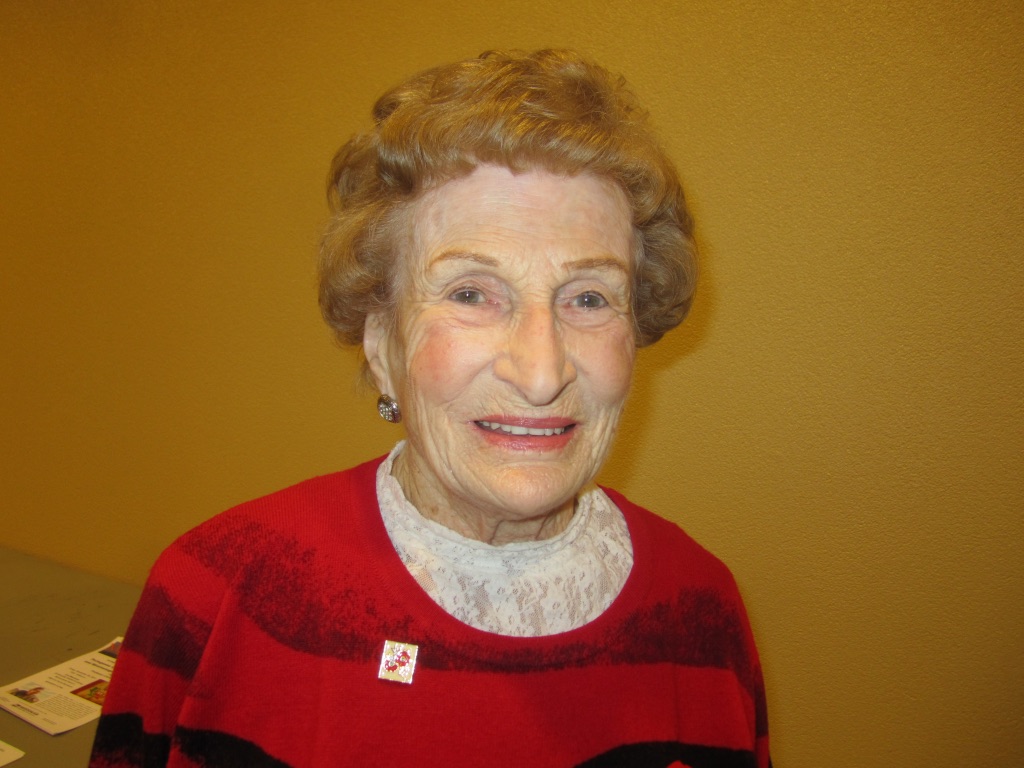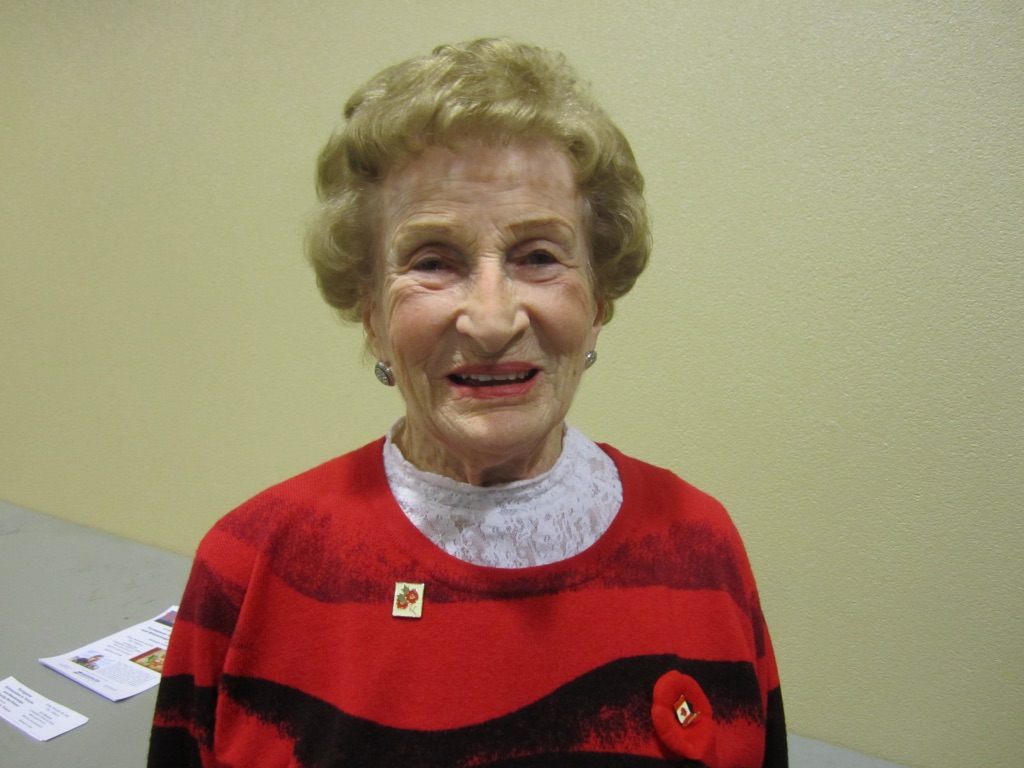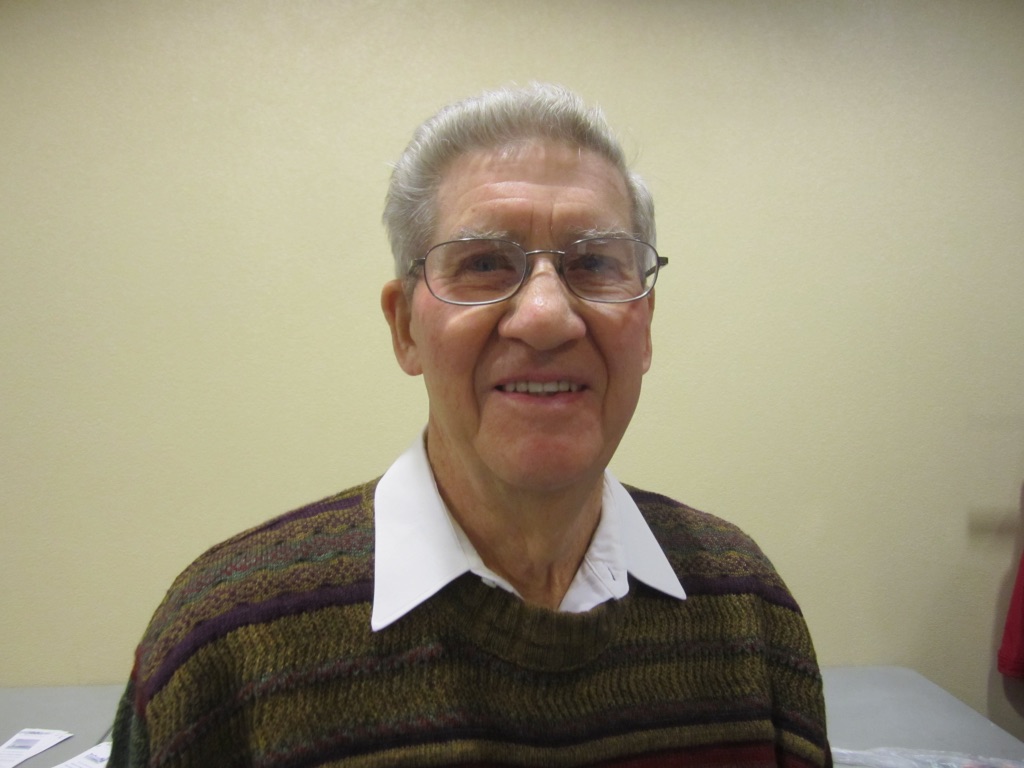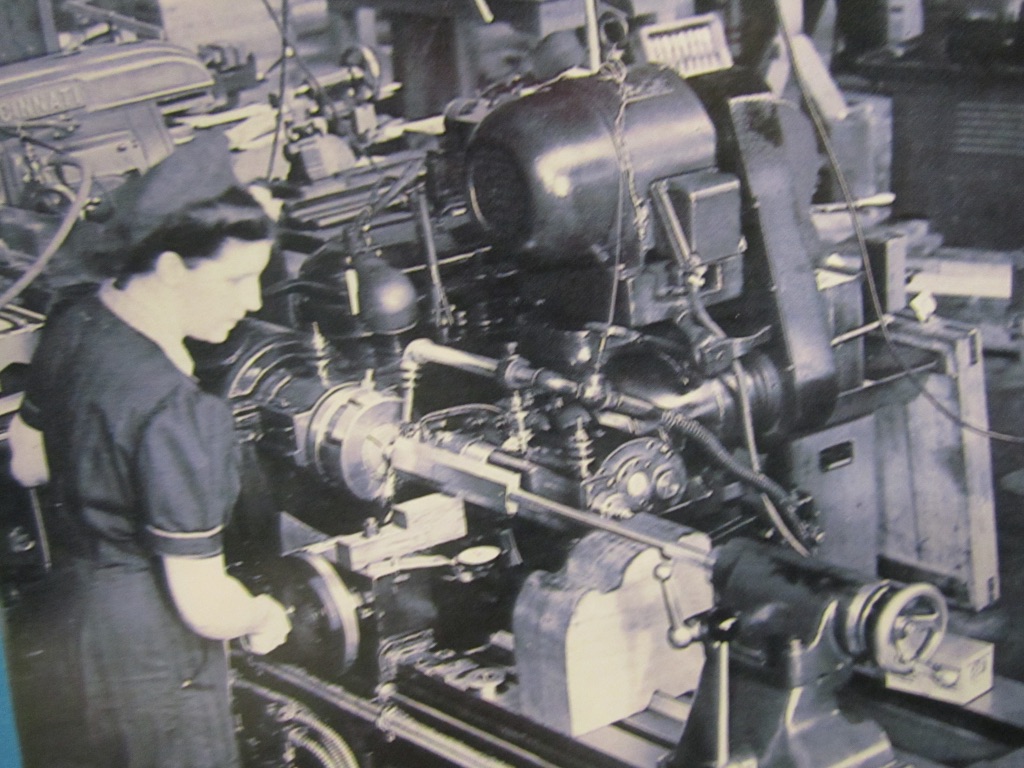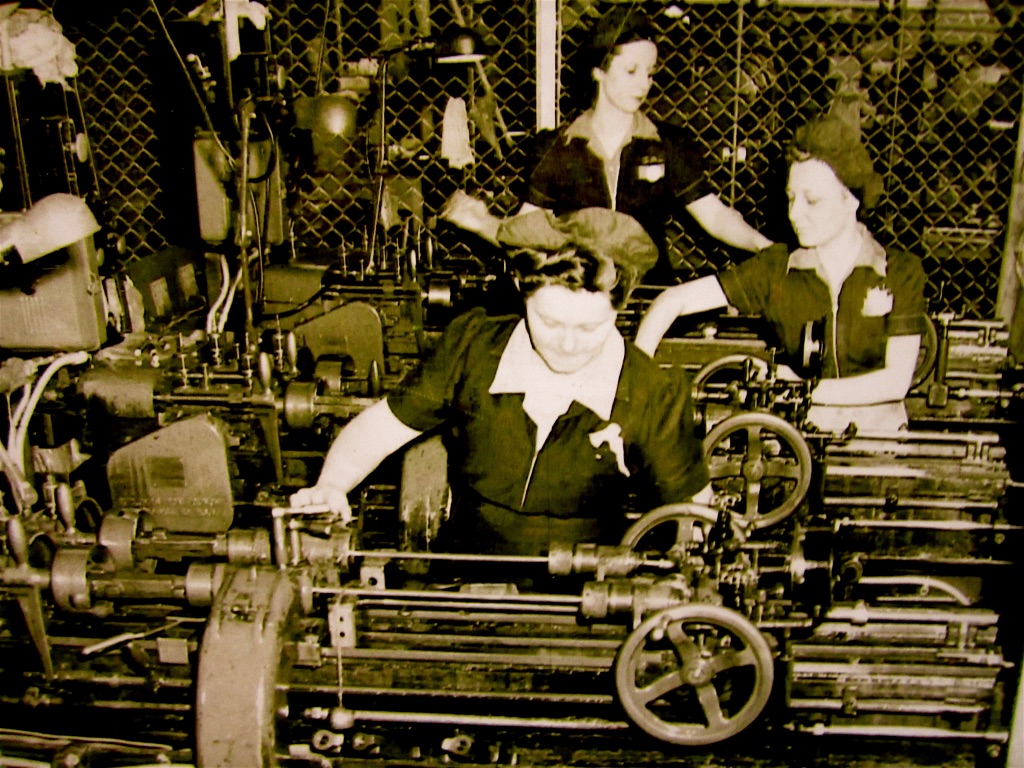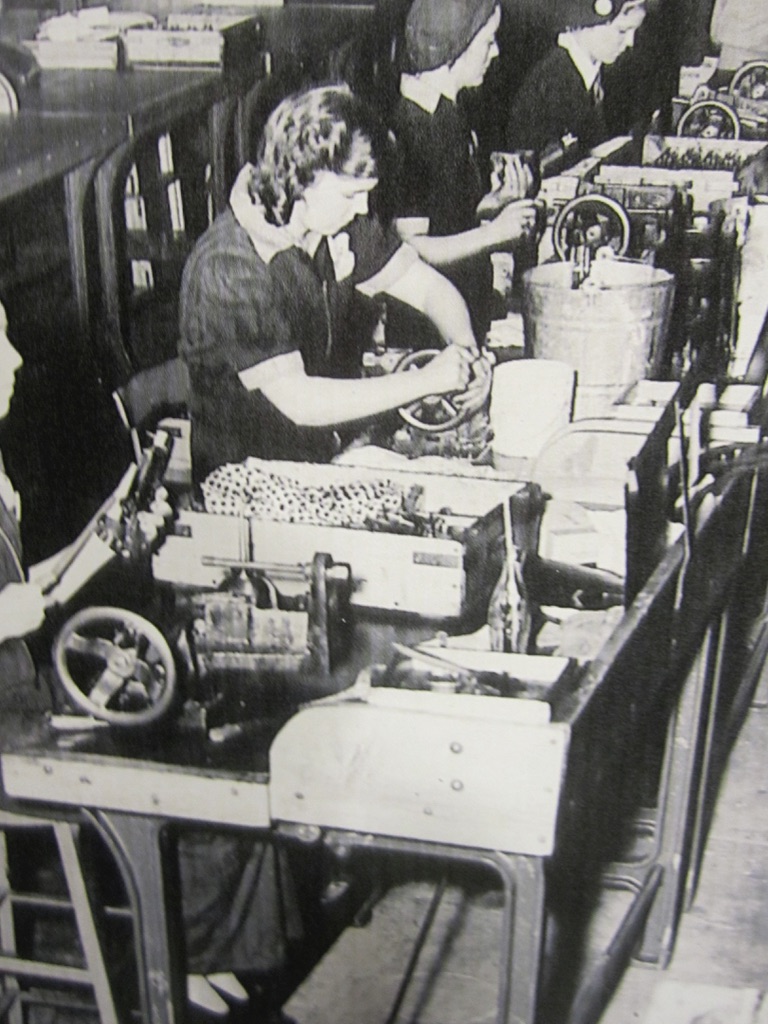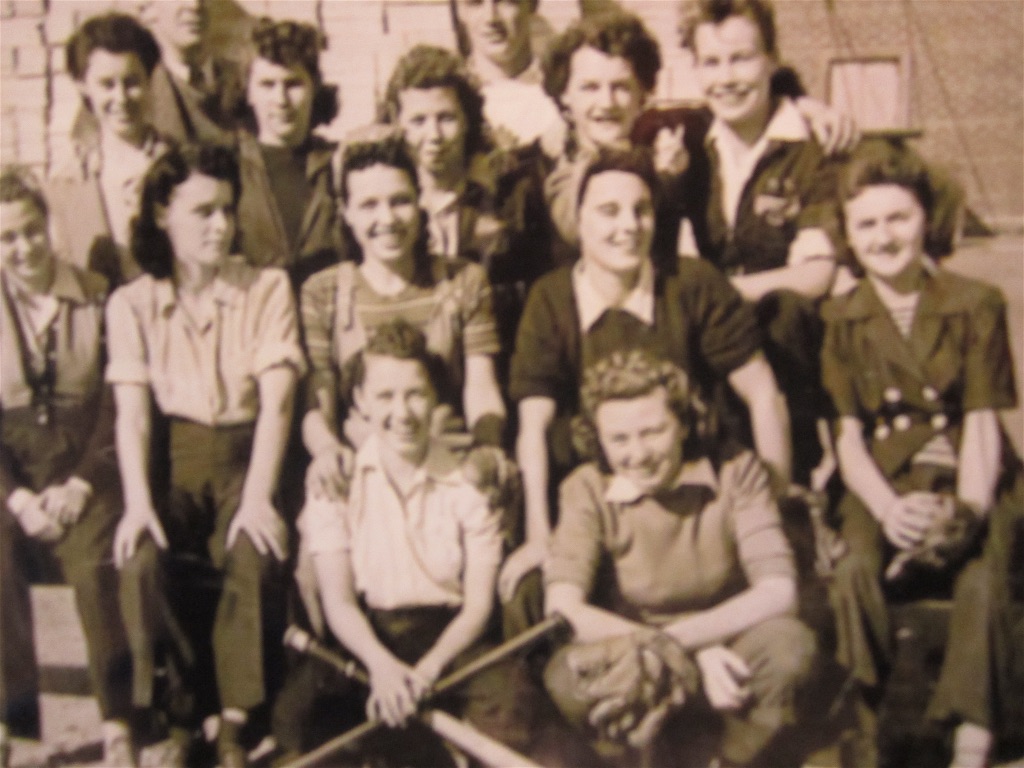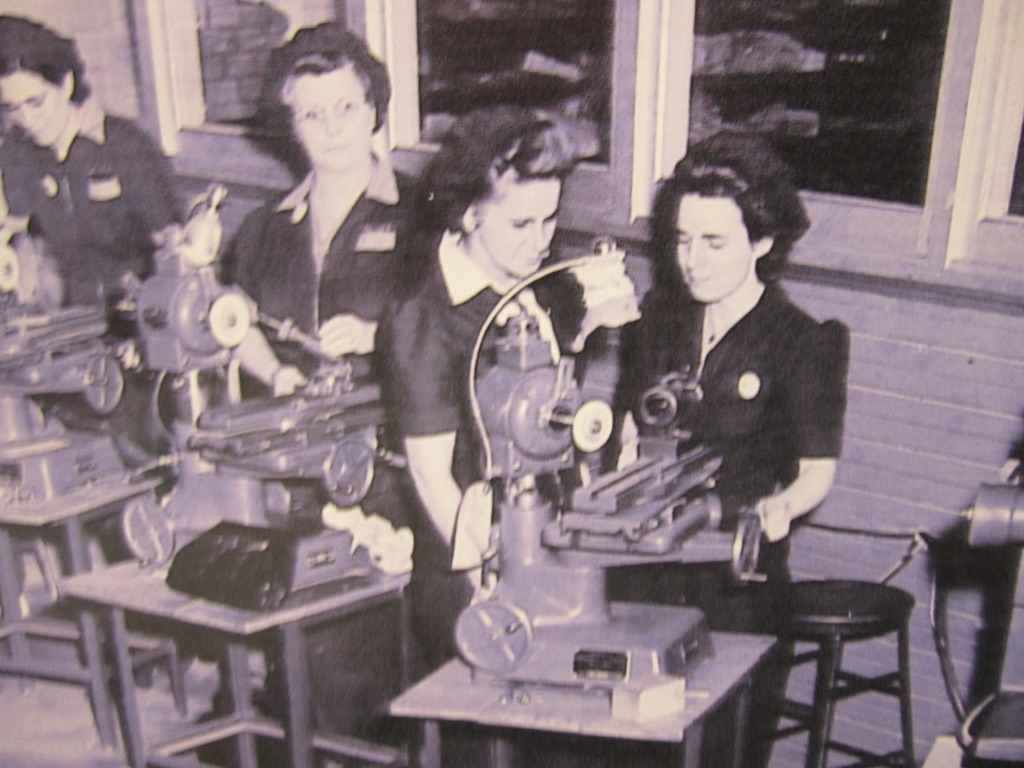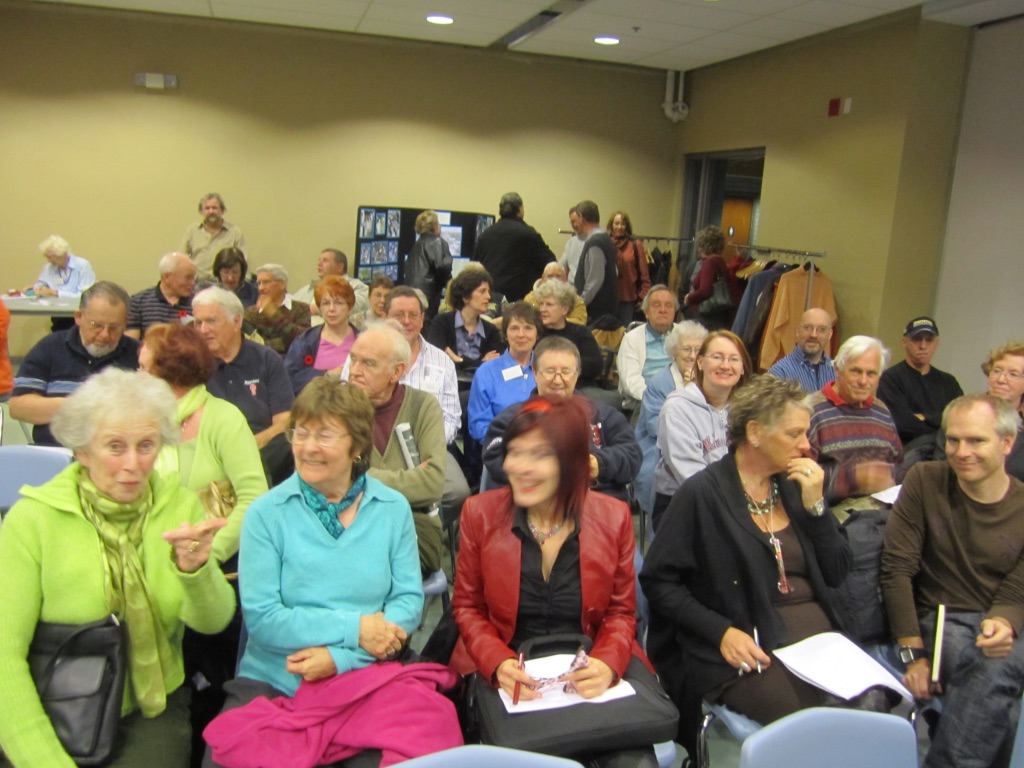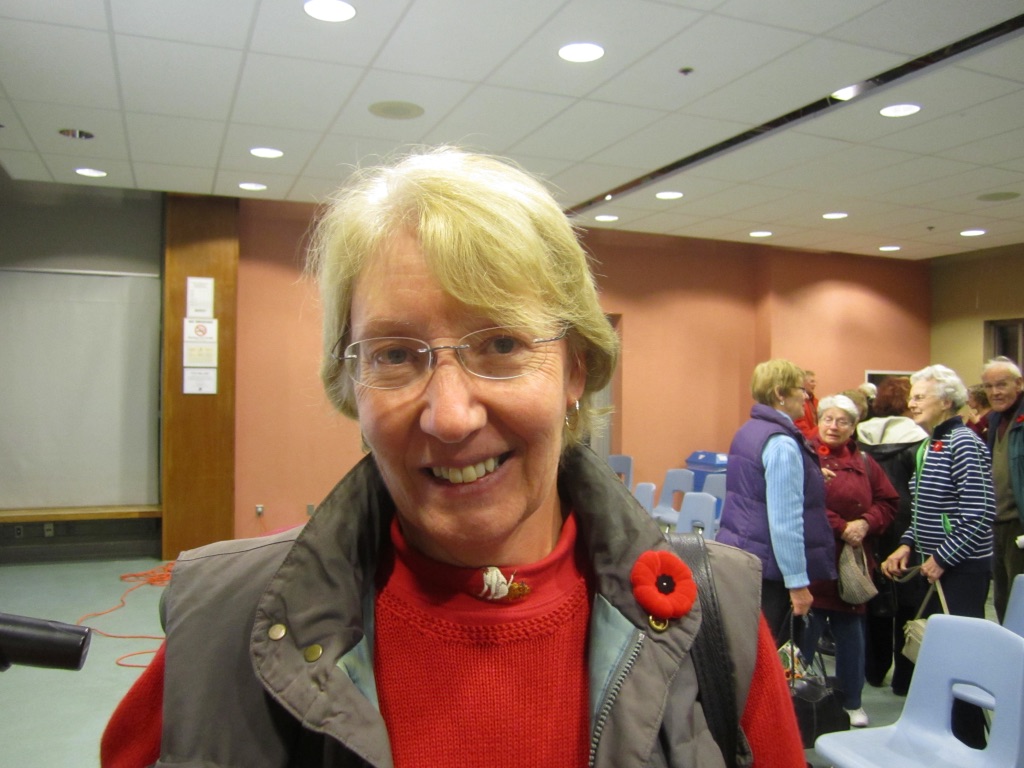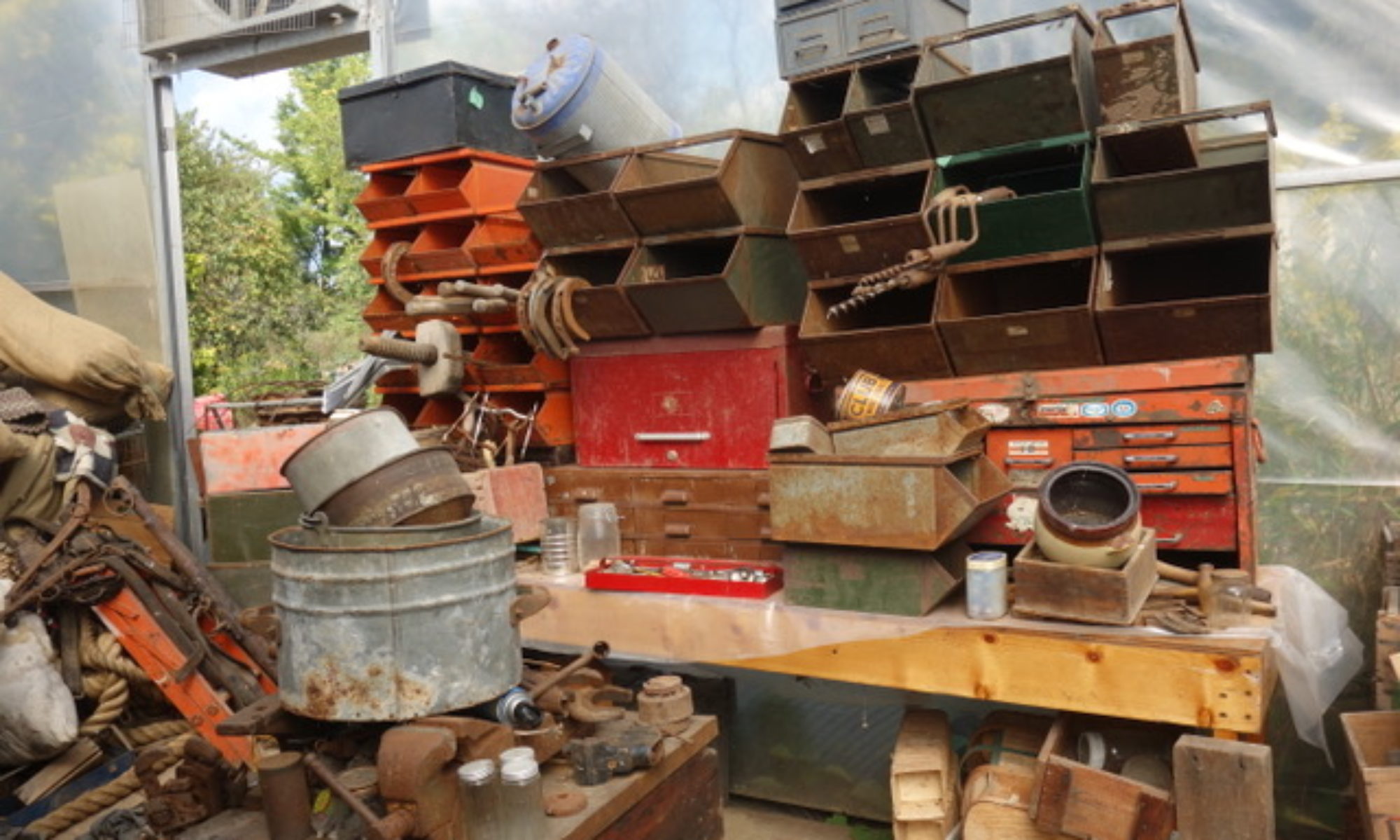EPISODE 716 THE GIRLS WHO MADE THE GUNS AT LAKEVIEW IN WW2,, “THE SMALL ARMS PLANT”
alan skeoch
January 14, 2023
Who is this lady?
Some called these ‘girls” the “bomb girls”. I would rename them the
“Sten Gun girls” because they made so many of those World War II
hand held machine guns. I believe paratroopers were issued with a sten
gun whenever a drop was planned. Sten guns were made in other places but a
great number were made In Lakeview, now a suburb of Mississauga.
WHO WERE THESE GIRLS?
Around the mid 1990’s or earlier Our historical society organized a reunion of the girls who made the guns at LakeView
SMALL ARMS PLANT in World War II.
They were a feisty bunch who came that evening.. Laughter and tears. Many oF them were 20 years old in 1940 thus in their 70’s
when we got them together for the last time. Some got a little emotional To be sure, but my strongest memory is the noise…the joy…
as the girls got together for what they knew would be the last time.
NOTE: I TOOK THESE PICTURES OF THE GRILS/LADIES BUT NOT THE BLACK AND WHITE
MACHINE SHOP PICTURES. I HAVE NOT FOUND THE ARTICLE I WROTE
AT THE TIME SO THIS STORY IS INCOMPLETE….A FRAGMENT SADLY…NO NAMES, NO
MEMORIES. SOME READERS WILL KNOW MORE. PLEASE FEEL FREE TO ADD TO THE STORY.
Miss Francescini ( sp?) , daughter of the sand and Gravel
company on Cawthra Road was one name I remember.
I did manage to get some pictures of the laidies along with the machines they operated. and somewhere I
have a writen record of the affair.
What I do remember clearly is how these ladies took over the meeting.
“Women played a major role in the workforce at Small Arms Limited as can be seen in the cover photo making up most of the staff by 1943. The factory produced its first weapons in June 1941 and by the end of the year had made 7,589. By 1943 the plant was working three shifts, using 5,500 employees to produce over 30,000 units per month. World War Two ended in 1945 and war-time production was completed in December with over 900,000 rifles and 126,00 machine guns having been produced.”
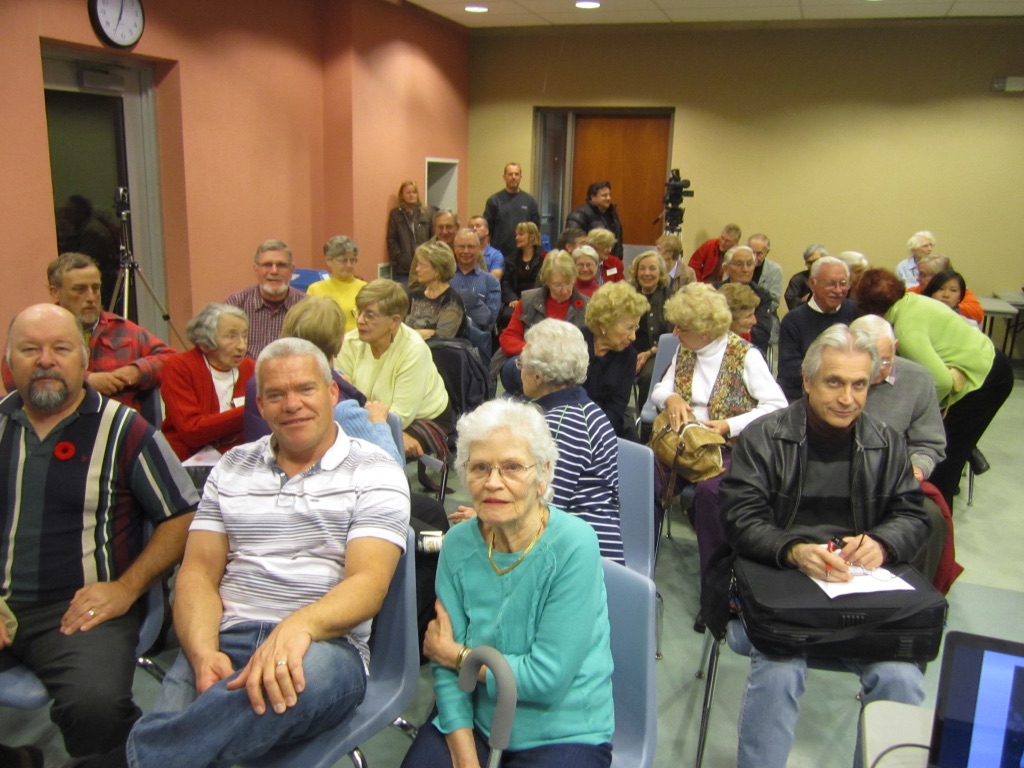
“Construction on the Dominion Small Arms Limited munitions factory, including the Inspection Building (then known on the site as Building 12), commenced on August 20, 1940. The first rifles produced here were ready for inspection in June of 1941. At the end of 1941, the factory had 1,200 employees and had made 7,589 rifles. In 1942, the factory was in full production making pistols, Mark II Sten sub-machine guns, Lee Enfield No. 4 rifles, ammunition, and a myriad of other military supplies. By 1943 the factory employed more the 5300 workers, 65% of whom were women. “
The demand for labour by wartime industries during the Second World War was high since many young men in the labour force were already enlisted in the armed forces. Small Arms Limited employed recruiters who travelled across Canada offering jobs for single women or married women without children with husbands in the armed forces. Hired workers were given free passage to Toronto for a good paying job in good working conditions. In total, the personnel department hired over 14,000 employees during its entire operation.
The demand for labour by wartime industries during the Second World War was high since many young men in the labour force were already enlisted in the armed forces. Small Arms Limited employed recruiters who travelled across Canada offering jobs for single women or married women without children with husbands in the armed forces. Hired workers were given free passage to Toronto for a good paying job in good working conditions. In total, the personnel department hired over 14,000 employees during its entire operation.
In 1943 when Small Arms, Limited was in full operation, it employed approximately 5,500 employees working three 8-hour shifts producing over 30,000 units per month. Approximately 62% of the employees in the munitions factory were women, who earned approximately 50 cents an hour. One quarter of them were aged 40 or older. The Second World War marked the first time work in munitions factories were opened to women. In addition to the munitions factory, the company also built a large dormitory for its workers, and engaged its workforce in many recreational activities.In 1943 when Small Arms, Limited was in full operation, it employed approximately 5,500 employees working three 8-hour shifts producing over 30,000 units per month. Approximately 62% of the employees in the munitions factory were women, who earned approximately 50 cents an hour. One quarter of them were aged 40 or older. The Second World War marked the first time work in munitions factories were opened to women. In addition to the munitions factory, the company also built a large dormitory for its workers, and engaged its workforce in many recreational activities.
